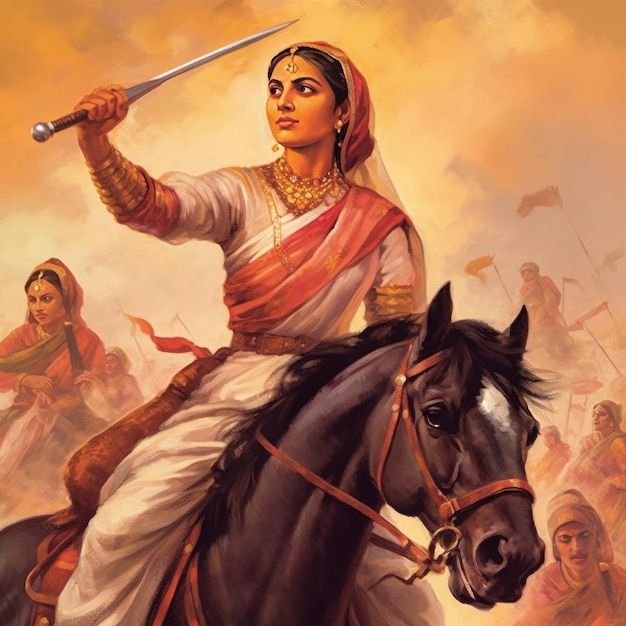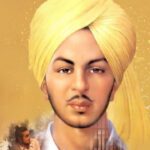Rani Lakshmi Bai: 10 Inspiring Facts About the Warrior Queen of Jhansi
Introduction
Rani Lakshmi Bai, famously known as the Queen of Jhansi, was a fearless warrior and a key figure in the First War of Indian Independence in 1857. Her bravery, leadership, and patriotism continue to inspire generations. She symbolizes the spirit of resistance against colonial rule and remains one of India’s most celebrated historical figures.
Biography
Born as Manikarnika Tambe on November 19, 1828, in Varanasi, she grew up learning horseback riding, sword fighting, and martial arts. After marrying Maharaja Gangadhar Rao of Jhansi, she became Rani Lakshmi Bai. Following the death of her husband, she took charge of the kingdom and led it with determination against British forces.
Key Milestones in Her Life:
- Early Education: Grew up learning warfare and administration.
- Marriage: Married the King of Jhansi, Gangadhar Rao.
- Battle Against the British: Led the army to defend Jhansi during the 1857 revolt.
- Adopted Son: Adopted Damodar Rao as her heir.
- Martyrdom: Fought bravely till her last breath in 1858.
Role in India’s Freedom Struggle
Lakshmi Bai played a significant role in the 1857 rebellion, where she:
- Defended Jhansi: Refused to surrender her kingdom to British forces.
- Alliance with Indian Rebels: United forces with Tatya Tope and Nana Sahib.
- Symbol of Women’s Empowerment: Proved that women can lead in battle.
- Died a Heroine: Fought gallantly in the battle of Gwalior.
Significance
Her legacy is of immense importance in Indian history:
- Inspiration for Future Generations: Encouraged many freedom fighters.
- Icon of Bravery: Her courage is remembered in history and folklore.
- Women’s Empowerment: Became a symbol of strength for Indian women.
- Defender of India’s Sovereignty: Resisted British rule with all her might.
Observance of Her Contributions
Her heroism is honored through various events and programs:
- Rani Lakshmi Bai Jayanti: Celebrated every year on November 19.
- Statues and Memorials: Erected across India in her honor.
- Inspirations in Literature and Film: Numerous books and movies depict her valor.
Facts
- She was trained in martial arts from a young age.
- Jhansi was annexed by the British under the Doctrine of Lapse.
- She disguised herself as a soldier to escape from Jhansi.
- Her famous war cry was “Main Jhansi Nahi Doongi” (I shall not surrender Jhansi).
- She led an army with men and women soldiers alike.
- Her palace in Jhansi is now a famous tourist site.
- She is remembered as India’s Joan of Arc.
- Fought battles even after losing Jhansi to the British.
- Became a martyr at the age of just 29.
- Her life inspired many to join India’s independence movement.
Daily Life Impact
Her legacy continues to empower women and inspire leaders to fight for justice and equality. Her ideals of patriotism and courage serve as guiding principles for Indian youth.
Wishing on Lakshmi Bai Jayanti
Celebrate her legacy with these wishes:
- “Saluting the bravery of Rani Lakshmi Bai, the warrior queen of India.”
- “Let us remember the fearless spirit of Jhansi Ki Rani on her birth anniversary.”
- “May we all draw strength from Rani Lakshmi Bai’s courage and determination.”
FAQs
Q: Why is Rani Lakshmi Bai famous?
A: She is famous for her fearless resistance against British rule during the 1857 revolt.
Q: How did Rani Lakshmi Bai die?
A: She died fighting bravely against British forces in the battle of Gwalior in 1858.
Q: What were Rani Lakshmi Bai’s major contributions?
A: She defended Jhansi, united Indian forces, and inspired future freedom fighters.
Q: When is Rani Lakshmi Bai’s birth anniversary celebrated?
A: On November 19 every year.
Important Points to Remember
- She was a fearless warrior and a strategic leader.
- She played a crucial role in India’s first fight for freedom.
- Her legacy continues to inspire women and leaders.
- Her sacrifice remains a symbol of patriotism and courage.
Importance to Society
Her life teaches us resilience, patriotism, and the power of leadership. She is a role model for women empowerment and the fight against injustice.
Conclusion
She was not just a queen but a warrior who gave her life for her motherland. Her fearless leadership, patriotism, and selflessness continue to inspire millions.
Let us honor her legacy and work towards a strong and independent India, just as she envisioned!










